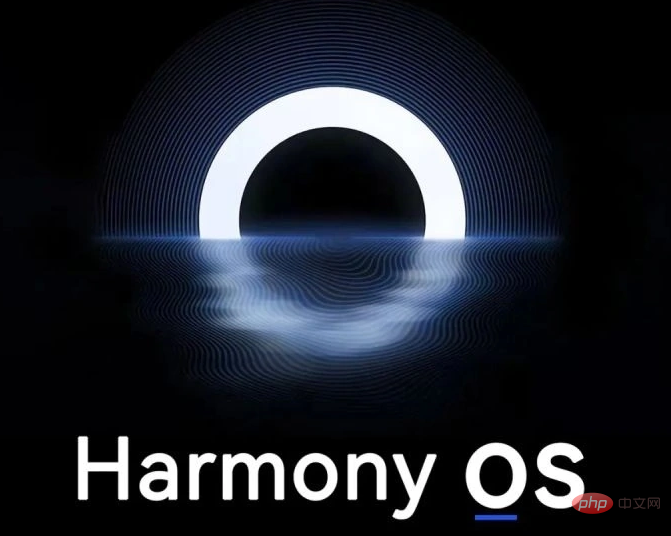
Hongmeng system is an operating system, a new distributed operating system based on microkernel; Hongmeng system can integrate multiple physically separated devices into a "super terminal" through distributed technology. Features a trustworthy and secure architecture and enables seamless collaboration across devices.

The operating environment of this tutorial: HarmonyOS 2.0 system, HUAWEI P50 mobile phone.
The official definition given by Huawei is: a distributed operating system for all scenarios.
This means that Hongmeng uses distributed technology to integrate multiple devices that are physically separated from each other into a "super terminal".
is a new distributed operating system based on microkernel, designed to provide a new user experience for all devices and scenarios, providing a smooth experience in all scenarios. It has a trustworthy and secure architecture and supports seamless collaboration across devices.
HUAWEI Harmony OS is an operating system officially released by Huawei at the Huawei Developer Conference (HDC.2019) held in Dongguan on August 9, 2019.
Huawei Hongmeng system is a new distributed operating system for all scenarios, creating a world of super virtual terminal interconnection, organically linking people, equipment, and scenarios, and connecting consumers in all scenarios. A variety of smart terminals that come into contact with in daily life can achieve extremely fast discovery, extremely fast connection, hardware mutual assistance, and resource sharing, and use appropriate equipment to provide scene experience.
On September 10, 2020, Huawei’s Hongmeng system was upgraded to HarmonyOS version 2.0. On April 22, 2021, Huawei’s HarmonyOS application development online experience website was launched. On May 18, Huawei announced that Huawei HiLink will be unified with Harmony OS into Harmony Connect.

Expand knowledge
HarmonyOS is based on the following four technical features:
1 .Seamless experience:
HarmonyOS adopts distributed architecture and distributed virtual bus technology to provide shared communication platform, distributed data management, distributed task scheduling and virtual peripherals. With HarmonyOS, application developers will not have to deal with the underlying technology of distributed applications, allowing them to focus on their personal service logic.
Developing distributed applications will be easier than ever. Apps built on HarmonyOS can run on different devices while providing a seamless collaboration experience across all scenarios.
2. Smooth performance:
HarmonyOS will solve the challenge of poor performance with a deterministic latency engine and high-performance inter-process communication (IPC).
Deterministic Latency Engine sets task execution priority and time limits for scheduling in advance. Resources will be skewed towards tasks with higher priority, reducing application response latency by 25.7%. The microkernel can improve IPC performance up to five times over existing systems.
3. More secure:
HarmonyOS uses a new microkernel design with enhanced security and low latency. This microkernel aims to simplify the kernel functions, implement as many system services as possible in user mode outside the kernel, and increase mutual security protection. The microkernel itself only provides the most basic services such as thread scheduling and IPC.
Harmony OS’s microkernel design uses formal verification methods to reinvent security and trustworthiness from the ground up in a Trusted Execution Environment (TEE).
Formal verification method is an effective mathematical method to verify the correctness of the system from the source, while traditional verification methods, such as functional verification and attack simulation, are limited to limited scenarios. In contrast, formal methods can use data models to verify all software execution paths.
HarmonyOS is the first operating system to use formal verification in device TEE, significantly improving security. Additionally, because the HarmonyOS microkernel has much less code (approximately one thousandth that of the Linux kernel), the likelihood of being attacked is significantly reduced.
4. All-in-one:
With the support of multi-device IDE, multi-language unified compilation, and distributed architecture suite, HarmonyOS can automatically adapt to different screen layouts Controls and interactions, supporting both drag-and-drop control and preview-oriented visual programming.
This enables developers to more efficiently build applications that run on multiple devices. With a multi-device IDE, developers can write applications once and deploy them on multiple devices, creating a tightly integrated ecosystem across all user devices.
Huawei Ark Compiler is the first static compiler comparable to the Android virtual machine, enabling developers to compile a wide range of high-level languages into machine code in a single, unified environment. By supporting multi-language unified compilation, Huawei's Ark compiler will help developers greatly improve productivity.
For more related knowledge, please visit the FAQ column!
The above is the detailed content of Is Hongmeng an operating system?. For more information, please follow other related articles on the PHP Chinese website!
 What are the video server configuration parameters?
What are the video server configuration parameters?
 Introduction to linux operating system
Introduction to linux operating system
 Main uses of Linux operating system
Main uses of Linux operating system
 The role of linux operating system
The role of linux operating system
 Virtual number receives verification code
Virtual number receives verification code
 Build your own git server
Build your own git server
 flac format
flac format
 How to use HttpCanary packet capture tool
How to use HttpCanary packet capture tool
 Tutorial on merging multiple words into one word
Tutorial on merging multiple words into one word